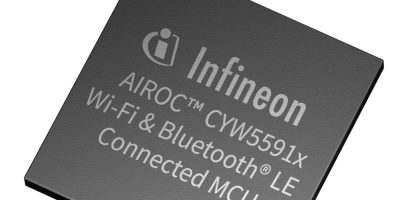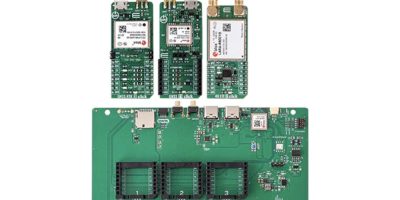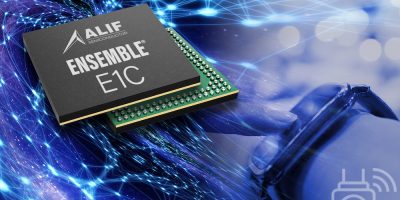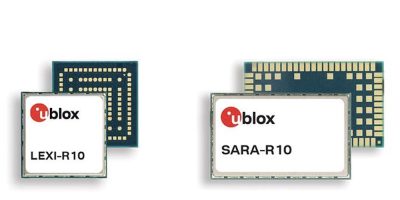Infineon has announced the company’s new AIROC CYW5591x connected microcontroller (MCU) product family. The new family integrates robust, long-range Wi-Fi 6/6E and Bluetooth Low Energy 5.4 along with a secured and versatile MCU to allow customers to build cost-optimised, power-efficient, small form-factor products for smart home, industrial, wearables, and other IoT applications. The flexible platform accelerates customers’ time-to-market with ModusToolbox software, RTOS and Linux host drivers, a fully validated Bluetooth stack and multiple sample code examples, Matter software enablement, and support for Infineon’s worldwide partner network.
This flexible device family can be used as the main processor in an IoT device or as a subsystem in more complex designs to fully offload connectivity for IoT applications. The product family is available in three versions: CYW55913 for tri-band (2.4/5/6 GHz), CYW55912 for dual-band (2.4/5 GHz), and CYW55911 for single-band (2.4GHz) support.
Key features
• An Arm Cortex M33 192MHz MCU with TrustZone CC312 with 768 KB SRAM
• Quad-SPI with XIP with on-the-fly encryption/decryption for FLASH and PSRAM
• 1×1 Tri-Band (2.4/5/6 GHz) 20MHz Wi-Fi 6/6E (802.11ax)
• Up to +24 dBm transmit power for Wi-Fi for best-in-class range
• Supports 6 GHz (Wi-Fi 6E) greenfield spectrum for lower congestion and reduced latency
• Matter-over-Wi-Fi support
• Bluetooth Low Energy 5.4 supports Bluetooth low energy 2 Mbps, LE Long Range, Advertising Extensions, and Advertising code selection for LE Long Range
• Bluetooth Low Energy range and power are also optizized with up to +19 dBm transmit power
• Best-in-class LE Longe Range sensitivity of -111.5 dBm
• Extensive peripherals and GPIO support: 3xSCB(I2C/SPI/UART), TCPWM, 7 channel 12-bit ADC, Digital Microphone support, TCM (I2S/PCM), and up to 47 GPIOs
• Hardware support for AES, RSA, ECC, ECDHA, ECDSA, Root-of-Trust
• Multi-layer security supporting lifecycle management, secured boot with firmware authentication and encryption, anti-rollback, crypto key establishment, and management
• PSA Level 2 Certifiable







